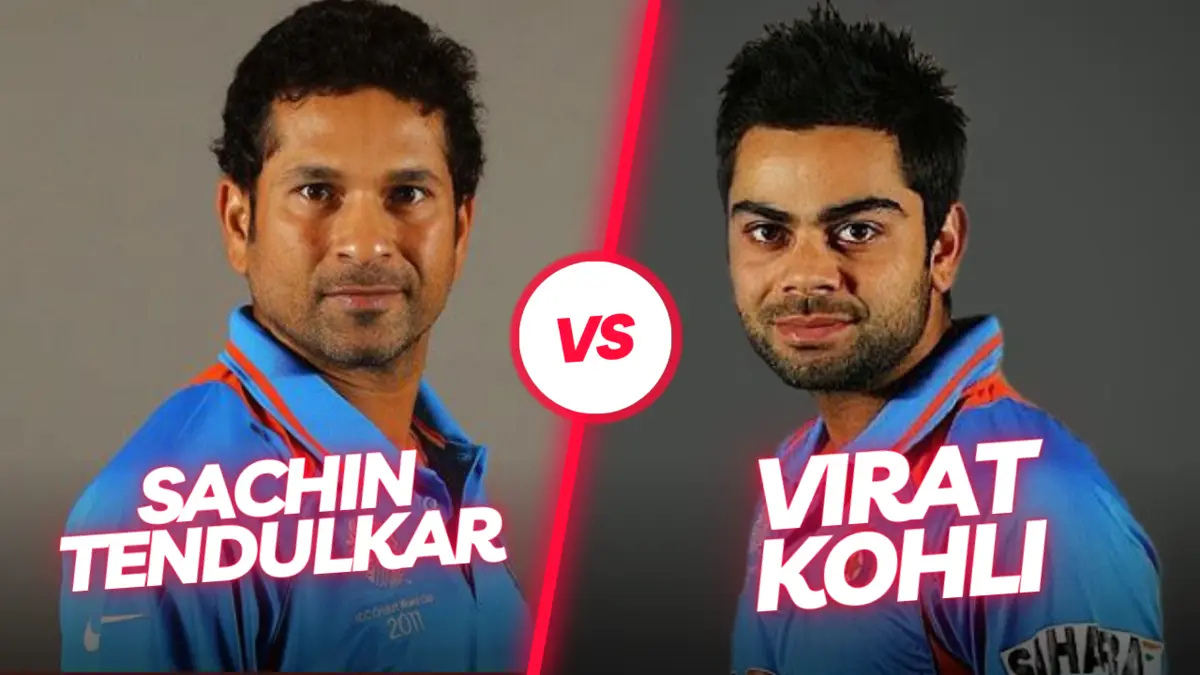When Dennis Lillee exploded onto cricket terrain, a blond phenom erupted fast bowling possibilities – synthesizing blistering pace with unwavering commitment until injuries sidelined forecasts of greatness.
But deeper burned an insatiable drive – Lillee exploring physical and psychological frontiers seeking bowling potency – his renewed powers birthing sustained destruction few have rivaled since.
Beyond devilish pace and brawn persisted sophisticated strategist, maximizing versatile weapons – honing meticulous plans that subdued even history’s most robust batting orders through unrelenting psychological siege. Spectators watched records topple like wickets for over a decade at his menacing peak.
Article Highlights
Hide- Dennis Lillee was born on July 18, 1949, in Subiaco, Perth, Western Australia and grew up playing Australian Rules football before focusing on cricket.
- He made his first-class debut for Western Australia at the age of 20 and displayed exceptional talent and determination from a young age.
- Lillee's talent catapulted him into the limelight, and he established himself as a fearsome competitor with his aggressive and competitive nature.
- Throughout his career, Lillee achieved numerous milestones and records, including becoming the world record holder for most Test wickets in 1981 and retiring with 355 Test wickets.
Yet statistics alone insufficiently capture Lillee’s penetrating imprint that helped recalibrate limits of human potential – his explorations unraveling scientific truths applied towards unlocking bowling’s true upper echelons.
Such tireless innovation places Lillee as pioneer revealing trade secrets benefitting generations henceforth – a figure of infectious passion and cricket ingenuity whose stormy rise still generates awe.
Early Years and Background
Born on July 18, 1949, in Subiaco, Perth, Dennis Keith Lillee emerged from humble beginnings to become one of cricket’s most formidable fast bowlers.
His ascent is a narrative of resilience and meticulous skill development, symbolizing liberation from the constraints of a non-privileged background to reach the zenith of international success.
Lillee’s early years were underscored by a sheer determination to excel in a sport that, during his formative period, was still largely dominated by individuals from more affluent backgrounds.
Keith Miller
When Keith Miller strode to the crease or steamed in bowling, spectators braced for sparking ... Read More
Lillee’s initial engagement with cricket was a process of self-liberation, as he channeled his energies into mastering the art of fast bowling.
His early career at Western Australia provided a foundation for disciplined growth. This period was marked by relentless training and honing of technique, which is essential in the fast bowling discipline, known for its physical demands and strategic complexity. His rise through the ranks was not serendipitous but a testament to his dedication to the craft.
The analytical observation of Lillee’s beginnings reveals a pattern of overcoming societal and personal barriers. His trajectory serves as an emblem of empowerment, showing that liberation through sporting excellence is achievable.
It is a journey reflective of individual meritocracy, where Lillee’s prowess would eventually dismantle the shackles of his modest origin.
Dennis Lillee: Rise to Cricketing Prominence
As Dennis Lillee honed his craft with unwavering dedication, his talent soon catapulted him into the limelight of international cricket, where his prowess as a fast bowler began to rewrite records and capture the imagination of fans worldwide.
Lillee’s rise was not merely a function of natural ability, but a testament to his rigorous training regimen and an indomitable spirit that thrived on challenges.
- Key Milestones in Lillee’s Ascendancy:
- Debut Brilliance: Lillee’s initial impact in Test cricket was marked by a fiery debut against England in 1971, where he claimed five wickets, signaling the birth of a bowling maestro.
- Dominant Performances: Consistently spearheading Australia’s bowling attack, he quickly established himself as a fearsome competitor, accumulating wickets at a rapid pace and setting several record-breaking performances.
This analytical overview points to Lillee’s methodical approach to the game, where his technical refinement, combined with a psychological edge, laid the groundwork for his legendary status.
His ascent is characterized by an unwavering quest for excellence and a relentless pursuit of victory, embodying the spirit of liberation that fans and aspiring cricketers admired.
His cricketing journey is punctuated by numerous accolades, underlining the profound impact he had on the sport’s narrative.
Key Career Milestones
Charting the trajectory of Dennis Lillee’s illustrious career, several milestones stand out as testament to his dominance in the realm of fast bowling, each marking a significant escalation in his journey to cricketing greatness.
Lillee’s first major milestone was his Test debut for Australia in 1971 against England, where he immediately signaled his potential. However, it was the 1972 Ashes series where he established himself as a fearsome pace bowler, taking 31 wickets in the series.
A pivotal career milestone occurred in 1975 when Lillee overcame a debilitating back injury, re-emerging with a refined bowling technique and unwavering determination.
This transformation was underscored by his legendary performance in the 1977 Centenary Test, where he claimed 11 wickets and was integral to Australia’s victory.
Lillee’s statistical supremacy was evident when he became the world record holder for the most Test wickets in 1981, a record he extended before his retirement in 1984.
His final Test match against Pakistan saw him take his 355th wicket, cementing his legacy as one of the greatest fast bowlers in cricket history.
Each milestone not only marks Lillee’s personal achievements but also reflects his relentless pursuit of excellence and his contribution to elevating the prestige of fast bowling in cricket.
Dennis Lillee: Notable Performances and Records
Throughout his illustrious career, Dennis Lillee notched up a series of remarkable performances and established numerous records, solidifying his status as a legendary figure in the world of cricket.
His statistical achievements are a testament to his dominance on the field and his ability to consistently deliver performances that captivated audiences and dismantled oppositions.
Analyzing Lillee’s career, one can identify several standout moments:
Ashes Triumphs
- Bowling Analysis: His Ashes series often featured devastating spells that rattled the English batting lineup, including a 10-wicket haul at Headingley in 1981.
- Historic Matches: Lillee played pivotal roles in securing victories for Australia, contributing significantly in both wickets taken and psychological warfare.
World Records
- Fastest to 300 Test Wickets: Lillee achieved this milestone in just 56 matches, a record at the time.
- Leading Wicket-taker: Upon his retirement, he held the record for the most Test wickets, a clear indicator of his long-term impact on the game.
These highlights reflect merely a fraction of Lillee’s extensive list of accomplishments. His career numbers reveal the extent of his influence in cricket, providing a comprehensive picture of a player who not only sought to excel but also to redefine the art of fast bowling.
Legacy and Statistical Breakdown
Building on the impressive array of performances and records, Dennis Lillee’s legacy in cricket is further underscored by a statistical breakdown that cements his standing among the sport’s greatest fast bowlers.
Throughout his career, Lillee amassed a remarkable 355 Test wickets in just 70 matches, achieving a formidable average of 23.92. This exceptional average is a testament to his consistent ability to claim wickets at a high frequency while conceding relatively few runs.
Lillee’s strike rate, an essential measure of a bowler’s effectiveness, stands at an impressive 52.0, indicating that he took a wicket approximately every 52 deliveries.
This figure not only highlights his potency in dislodging batsmen but also underscores the pressure he consistently applied during spells.
In the context of his era, where pitches often favored batsmen and protective gear was less advanced, such a strike rate is indicative of his prowess and control.
Moreover, Lillee’s 23 five-wicket hauls in an innings and seven 10-wicket match performances further illustrate his dominance over opposition batsmen. These numbers not only reflect his individual brilliance but also his capacity to change the course of a match single-handedly.
His statistical footprint thus provides a quantifiable dimension to his formidable reputation, ensuring that his impact on the game endures in the annals of cricket history.
Final Thought
Dennis Lillee, through a combination of raw talent, resilience, and an indomitable spirit, firmly established himself as one of cricket’s all-time greats.
His statistical legacy, marked by an impressive tally of wickets and numerous records, reflects his dominance in the sport.
Lillee’s career achievements and the lasting impact he left on the game underscore his place in the pantheon of cricket legends, influencing generations of fast bowlers and perpetually enriching cricket’s rich history.

















